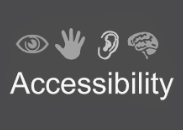Several different applications used every day (smartphones, tablets, etc.) employ this capacitive touch technology for display interfaces. Capacitive touch technology is relatively faster than other touch technologies and operates with a very light touch.
The construction of a surface capacitive touch screen includes a conductive coated substrate with 4 corner electrodes. The conductive coating used is not typically ITO but Antimony Tin Oxide (ATO) that possesses higher sheet resistance of about 2,000 ohms/square best suited for capacitive technology.
Upon finger touch on the screen surface, it couples with ATO surface underneath, creating a capacitive coupling that allows the radio frequency to flow through it.
However, there are two different variations in capacitive touch technology; surface capacitive and projected capacitive touchscreens. Although, both the capacitive touchscreens detect touch commands by measuring capacitance, a few noticeable differences would enable you to decide whether you should get surface capacitive or projected capacitive touchscreens for your applications.
Surface Capacitive:
Surface capacitive touchscreen sensors include a transparent conductive layer on a glass substrate under a protective silicate layer. The controller interface applies a high-frequency signal to an electrode at each corner of the conductive layer, resulting in the formation of a uniform electrostatic field. When a touch event happens on the screen, it creates capacitive coupling with a resistance to the ground, dissipating the signal. So the change in signal at each corner is measured to locate the touchpoint.
Surface capacitive sensors are often preferred for applications requiring good optics, light touch and vandal resistance.
Projected Capacitive:
Similar to surface capacitive, projected capacitive touchscreens also detect touch commands by measuring capacitance. However, the difference is in the construction. Unlike surface capacitive, PCAP touchscreen sensors use two perpendicular layers of conductive coatings that form vertical and horizontal patterned tracks behind a glass top layer.
There are several ways to design and configure a projected capacitive touchscreen. However, most of them feature columns and rows of intersecting electrodes. Projected capacitive touchscreen that include, Near Field Imaging (NFI) is constructed from a glass substrate with an ITO or ATO coating that is fixed as a grid pattern consisting of X and Y line elements. The grid-patterned substrate has a protective glass plate attached to the face of the grid substrate. An AC field is applied to the grid. There are two types of sensing in projected capacitive touch technology. Self-capacitive being an early type and mutual-capacitive being the later and most popular type. In the case of mutual-capacitive, when a finger or conductive stylus touches the sensor surface, it capacitively couples an x and y electrode allowing the controller interface to determine the touch point.
Given the unique design, projected capacitive touchscreens are much more durable than their surface capacitive counterparts. This is because surface capacitive touch screens have the conductive coating on the surface of the sensor glass only protected by a few angstroms of silicate coating. This makes the conductive coating vulnerable to scratches and abrasions. Projected capacitive touch screens have the x and y conductive grid layers behind a thick window glass that isn’t affected by scratches and abrasions. The best part of projected capacitive touch screens is that they can register multiple simultaneous touch commands whereas surface capacitive touch screens can only register a single touch.
However, the unique design and features like multi-touch and surface durability in projected capacitive touchscreens make them costlier than surface capacitive touchscreens.
Conclusion:
Both surface capacitive and projected capacitive touchscreens have their own distinctive features and are best suited for a variety of applications. However, it is completely your preference to select the touchscreens as per your specific requirements.
A D Metro offers best-in-class surface capacitive and projected capacitive touchscreens for ensured performance and durability. Moreover, they have PCAP innovations that include a patented group controller to serve a range of screen sizes. It simplifies design and reduces inventory costs. Also, its USB-HID compatibility with major operating systems allows simplified product development and accelerated time to market the applications.
In addition, A D Metro has developed an innovative PCAP controller interface called ARGON that is an intelligent controller that programs itself eliminating the need to manually program the controller with a software utility for the sensor channel setup, orientation, number of allowed touches, sensitivity etc.







